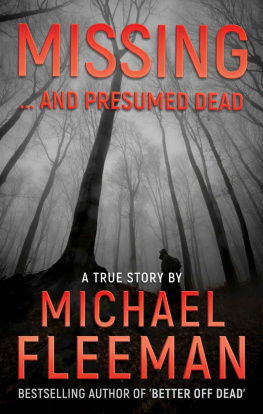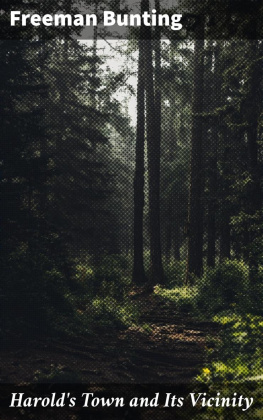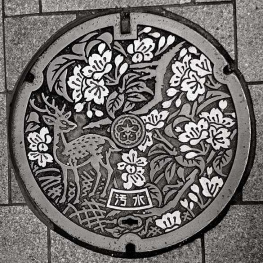Contents
Guide
Pagebreaks of the print version

The author and publisher have provided this e-book to you for your personal use only. You may not make this e-book publicly available in any way. Copyright infringement is against the law. If you believe the copy of this e-book you are reading infringes on the authors copyright, please notify the publisher at: us.macmillanusa.com/piracy.
Dear Reader:
The book you are about to read is the latest bestseller from the St. Martins True Crime Library, the imprint The New York Times calls the leader in true crime! The True Crime Library offers you fascinating accounts of the latest, most sensational crimes that have captured the national attention. St. Martins is the publisher of John Glatts riveting and horrifying SECRETS IN THE CELLAR , which shines a light on the man who shocked the world when it was revealed that he had kept his daughter locked in his hidden basement for 24 years. In the Edgar-nominated WRITTEN IN BLOOD , Diane Fanning looks at Michael Petersen, a Marine-turned-novelist found guilty of beating his wife to death and pushing her down the stairs of their homeonly to reveal another similar death from his past. In the book you now hold, THE BLACK WIDOWER , Michael Fleeman examines a case in which a seemingly perfect marriage went terribly wrong.
St. Martins True Crime Library gives you the stories behind the headlines. Our authors take you right to the scene of the crime and into the minds of the most notorious murderers to show you what really makes them tick. St. Martins True Crime Library paperbacks are better than the most terrifying thriller, because its all true! The next time you want a crackling good read, make sure its got the St. Martins True Crime Library logo on the spineyoull be up all night!

Charles E. Spicer, Jr.
Executive Editor, St. Martins True Crime Library
It was a glorious fall day. The aspens blazed yellow in the bright afternoon sun. The air was thin and warm enough for short-sleeves and smelled of pine and dust from the trail. Harold and Toni Henthorn looked like any other middle-aged couple on the trail to the summit of Deer Mountain. Toni wore jeans and hiking boots and a pink polo shirt and carried a purple backpack. That morning she had carefully combed and styled her shoulder-length light reddish blond hair, taking a curling iron to the ends so it turned up on either side of her face. She applied red lipstick and wore big amber tinted sunglasses. Harold wore jeans and a white T-shirt with a long-sleeved denim shirt over it and a gray baseball cap on which was written 2000 U.S. Open beneath an embroidered American flag. He was a few inches taller than his wife, had brown hair and a good smile and a slight middle-aged paunch. His backpack was gray.
They had spent the night at the $300-a-night Stanley Hotel in Estes Park, Colorado, the historic and (supposedly) haunted inspiration for Stephen Kings The Shining, posing for photos in front of the stately white-painted Georgian structure with a red roof and a wide porch with white columns and a row of American flags fluttering in the mountain air. Theyd made dinner reservations at the nicest place in Estes Park, Nickys Steakhouse, for later that evening. A handwritten entry in the reservation book had them down for 7 P.M. , though their name was misspelled Henchorn.
It was a Saturday, September 29, 2012, their twelfth wedding anniversary.
The couple set out at about 1:30 P.M. from the Deer Mountain trailhead marked by a wooden National Park Service kiosk warning them of all the things they shouldnt do and all the dangers that could await them on the trail. The trek begins at 8,930 feet above sea level and rises another 1,210 feet, for the next three miles, to a final elevation, at the mountains summit, of 10,013 feet. The guidebooks list the Trail Difficulty Rating as moderate, owing to the altitude and round-trip length and for sections of the trail that rise steeply on narrow switchbacks strewn with rocks and boulders and fallen branches and marked by little arroyos and tiny rock piles from mini-avalanches along the trail wall.
Anyone who has hiked the six-mile trek can attest that the experience is sublime. The trail cuts through meadows and stands of pine and reaches an apex that is not a craggy peak but a broad plateau from which, two miles high, one can see everything worth seeing. In one direction looms a row of mountains dominated by the famous Longs Peak. In another direction rises a series of gray peaks, aligned in formation, over Mills Valley and, to the east, the sylvan paradise, as one nineteenth-century writer called it, claimed by Kentuckian Joel Estes for his log cabins and cattle.
The Rocky Mountains have always inspired awe, the earliest writings about them filled with dreamlike wonder. In 1820, during an expedition across the continent, Capt. John R. Bell described seeing a blue stripe, close in with the horizon to the westwhich was by some pronounced to be no more than a cloudby others, to be the Rocky Mountains. Here, where the continent divides and the rivers run to different seas, the scenery overwhelms the senses. This is a glorious region, the English traveler Isabella Bird wrote to her sister in 1873, and the air and life are intoxicating.
Perhaps that is one reason why some people act the way they do in Rocky Mountain National Park. Intoxicated by the wilderness, they feed the wild animals and toss their cigarettes out of car windows. They leave their trash on the ground and lose track of their kids and lock their keys in their rental Kias in the visitor center parking lots.
And, if theyre Harold and Toni Henthorn, they leave the trail. They ventured off a clearly marked long-established heavily traversed pathway and plunged into an ever-darker forest of ponderosas. They made their way to a rocky outcropping on the side of the mountain and ate lunch and posed for pictures that they took with their camera and their cell phone. Then as the day drew later and the temperatures became cooler and the sun started to set behind the Rockies, they ventured even farther. They went down a rocky incline so steep that experienced climbers have to shimmy on their backsides to traverse it, and then they reached another rocky outcropping on the side of a cliff of dizzying heights where they posed for more pictures, one of which shows a fair redhaired Toni Henthorn, her pale arms freckled, holding binoculars, looking at something in the distance.
Around that momentmaybe at that momentfifty-year-old Toni Henthorn was gone.
911, whats the address of the emergency?
Hello, my name is Harold Henthorn. Im in the Rocky Mountain National Park. I need an Alpine mountain rescue team immediately.
What is your exact location?
My exact location is Deer Mountain near the summit about one mile south of the visitor center.
Harolds voice was urgent, but not hysterical. The cell phone reception came through crisp and clear.
It was 5:54 P.M. Mountain Time. He had reached the main Estes Park emergency dispatch center.
Im going to transfer you to the Park so hang on the line, the operator said. Youre going to hear some clicking. Right now, Im calling on my phone here.
As the sound of dial tones could be heard, Harold said, Ill tell you where I am, but the operator instructed, Ill introduce who we are when they pick up the phone.













